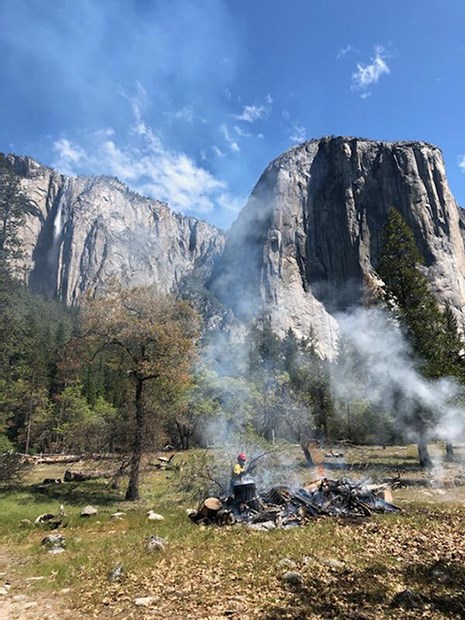Last updated: April 1, 2020
Article
Pile Burning Protects Landscapes at Yosemite National Park
How do staff manage to remove piles and piles of very large trees?
Most often, the simplest, safest, and most cost efficient way is to burn them. When they're in Yosemite National Park where iconic vistas attract millions of visitors, burning can be the fastest way to remove unsighlty debris left over from mechancal thinning operations.
NPS/J PEACH
Although the reason to remove them isn't just because they're unsightly. Piles of very large logs, branches, and debris are left over from removal of undesired or dangerous trees from the landscape. Usually, this debris is piled in open or cleared areas so that if a wildfire occurs, there is only a small amount of fuels around them that will burn.
Crews in Yosemite National Park successfully burned an estimated 300 piles over the winter of 2020 in a collaborative multi-division effort benefitting the Yosemite Valley and the community of Wawona, CA. Sizes ranged from small four foot in diameter piles to large log piles.
Completing the vegetation thinning and pile burns now will help lessen the effects of summer wildfire occurence. Wildfires in these treated areas would quickly burn the remaining vegetation, produce less smoke, and have a lesser chance of igniting surrounding vegetation.
Pile burning has been an efficient and effective way for reducing excessive fuel build-up on the landscape, reducing hazardous fuels in the wildland urban interface, and opening some of the most iconic viewsheds. Most of the piles were remnants of mechanical thinning from forestry operations and large-scale landscape restoration projects throughout the park. These efforts make the landscapes safer for firefighting efforts when needed, create a safer place for visitors, and help protect those beautiful vistas!
